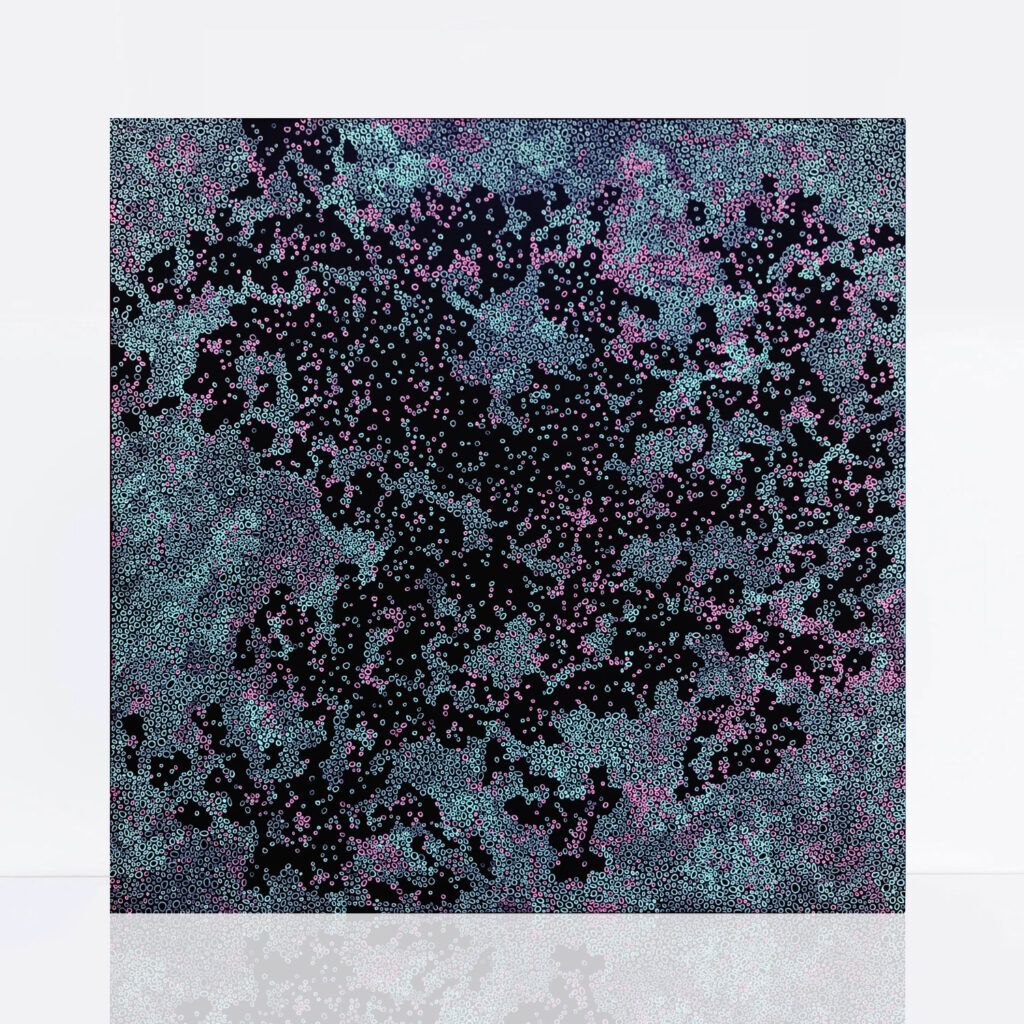I’ve experienced Visual Snow for as long as I can remember. The constant overlay of moving, colorful dots has been a persistent part of my visual field, day and night. Initially, I believed this was normal, but in my twenties, I realized it was unusual. At that time, doctors had no clue what it was and dismissed my experiences, advising me not to mention what they called hallucinations. Fortunately, many of my family members also have VSS, which reassured me I wasn’t imagining things. I continued searching for answers until, around 2016, I learned about Visual Snow Syndrome.
Rather than viewing VSS as a challenge, I’ve embraced it as a source of inspiration for my art. The vibrant patterns and constant motion I perceive have become integral to my creative process. By translating these visual experiences onto canvas, I not only manage the symptoms but also share my unique perspective with others. However, it’s important for me to get a good night’s sleep. I call it the “silent disco” at night, and it’s definitely more pronounced without proper rest.
I’ve noticed that my son also experiences Visual Snow. I’m encouraging him to see it as a normal part of his vision and not to stress about it. Growing up with Visual Snow is obviously much easier than suddenly developing it later in life; you learn to look through it. I don’t want to make it an issue for him.






